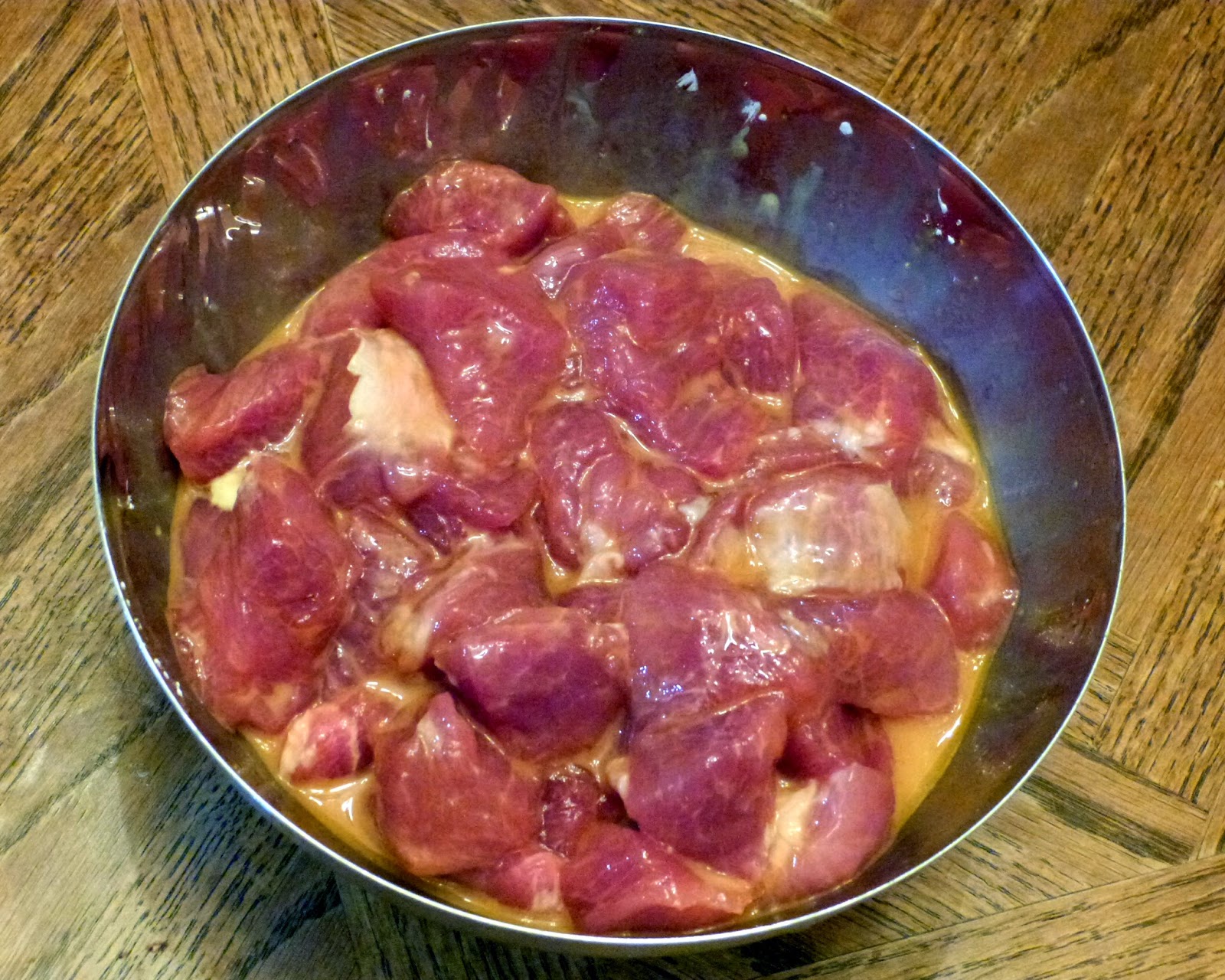A lot of Pei Mei's recipes follow the same basic pattern: Marinate meat, deep fry meat, cook aromatics and sauce, and toss meat in sauce. Lovers' Shrimp and Diced Fish with Fermented Black Beans are good examples of this kind of recipe. It's a formula that works well. The one step I usually skip, as I did with both those recipes, is the deep frying. I usually don't think it's worth using so much oil and going through the hassle when the meat is going into a sauce anyway, so I just stir fry the meat. Sometimes, though, the crunchiness that only deep frying can provide is an integral part of the dish.
I believe sweet and sour pork is one of those dishes where crunchiness is important, so the Fry Daddy (last featured in 2012's "Pub Week") came out to play. I did not make too many changes from the original recipe this time. The salt is lowered a bit, and the pepper-to-pork ratio is a little lower (Pei-Mei's ambiguous "2 green peppers" may have been smaller than mine). The main change is that the whole recipe is scaled up from the original 1 lb. of pork so that I could use up the pork left in the aftermath of last week's shaomai. As usual, I dug into what the Chinese name actually means, and gu lu rou literally means "mumbling meat." Maybe your mouth is supposed to be too full of delicious pork to talk properly. I'm going with that.
The only special ingredient that needs mentioning is white rice vinegar. Compared to black vinegar, this is a lot more common in the international section of the grocery store.
Ingredients
- 1 3/4 lb pork tenderloin
- 2 bell peppers (I used 1 red and 1 green)
- 6 slices canned pineapple
- Cornstarch for dredging
- Oil for frying
Marinade
- 1 Tbs soy sauce
- 2 Tbs cold water
- 2 Tbs cornstarch
- 1/2 tsp salt
- 2 egg yolks
Sauce
- 5 1/3 Tbs white rice vinegar
- 7 Tbs sugar
- 7 Tbs ketchup
- 8 Tbs cold water
- 5 tsp cornstarch
- 1 3/4 tsp salt
- 1 3/4 tsp sesame oil
Instructions
Cut pork into small chunks, about 1 inch cubes. Toss in a bowl with marinade ingredients to coat. Let rest in refrigerator for at least 30 minutes.
Cut the peppers in half and remove stems and seeds. Dice into small pieces. Cut the pineapple slices into similar-sized pieces. I made 8 small pieces out of each slice. Side all this aside for later. This is also a good time to mix together the sauce ingredients. Use a whisk to combine well.
 |
| The mighty Fry Daddy |
Heat oil in a wok, deep fryer, or pot. If using a wok, especially on an electric stovetop, you need to be careful about stability. For this reason, I used the Fry Daddy. Dredge each pork piece in cornstarch and deep fry until lightly browned and cook through, about 2 minutes. You will want to work in batches, and let the oil rest slightly between batches, so that it can heat back up. Once all the pork is cooked, let the oil heat up again and fry the pork again until crispy. This will only take about one minute per batch. Set aside.
 |
| Pork after second frying |
Heat a little oil in a wok on high heat. Stir fry the pepper and pineapple until softened and browned. This will take several minutes. Water will sweat out of the peppers; let this cook off so that they can brown.
Add the sauce, and cook for 1-2 minutes, reducing to desired thickness. It should be quite sticky. Turn the heat off and add the pork. Toss until pork is thoroughly coated. Serve with rice.



No comments:
Post a Comment